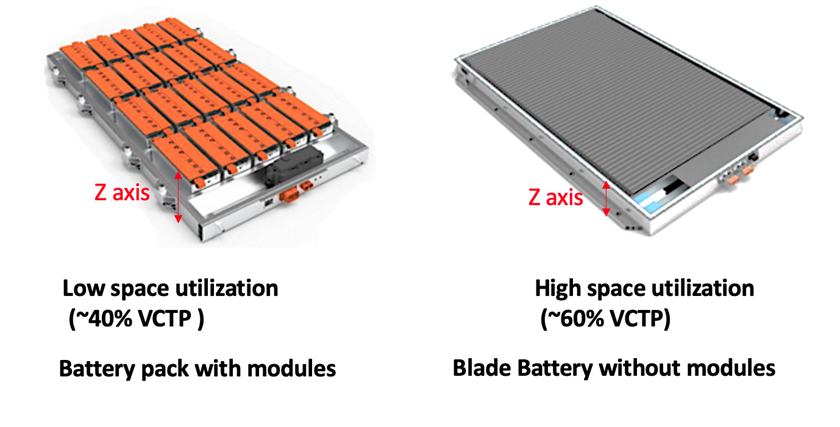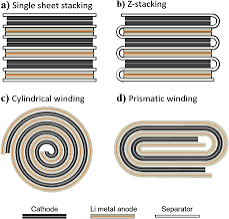shift from the standard “jelly roll” stack design
jelly roll design layers the battery cell’s electrodes and separators. This cell is rolled into a cylinder and then inserted into a rectangular case. The roll does not fit cleanly into the rectangular can; instead, gaps are inherent in this approach and reduce the cell’s overall efficiency
Z-shaped design, by contrast, allows the electrodes and separators to be collapsed and folded to fit more neatly into the container. This design shift offers around a 10% volumetric energy density improvement using the same materials

BYD is taking a somewhat different approach to replacing jelly rolls. It introduced a blade-like design in which individual cells are placed in arrays when they are inserted into the battery pack. The company states this approach increases the battery pack’s space utilisation by more than 50% compared to earlier jelly roll designs
manufacturers are moving away from air-cooled batteries to favour liquid cooling
Liquid cooling reduces uneven temperature control and supports the move to larger Z-stack cell designs
In the same cell that earlier held a 280 Amp-hour (Ah) configuration can now hold a cell as large as 316Ah in a liquid cooled configuration
National Defense Authorization Act that was approved on 22 December bars the Pentagon from buying batteries from Chinese suppliers alleged to have ties either to China’s military or the ruling communist party. The ban takes effect in October 2027 and targets CATL, BYD, Envision Energy Ltd., EVE Energy Co., Gotion High Tech Co. and Hithium Energy Storage Technology Co.
